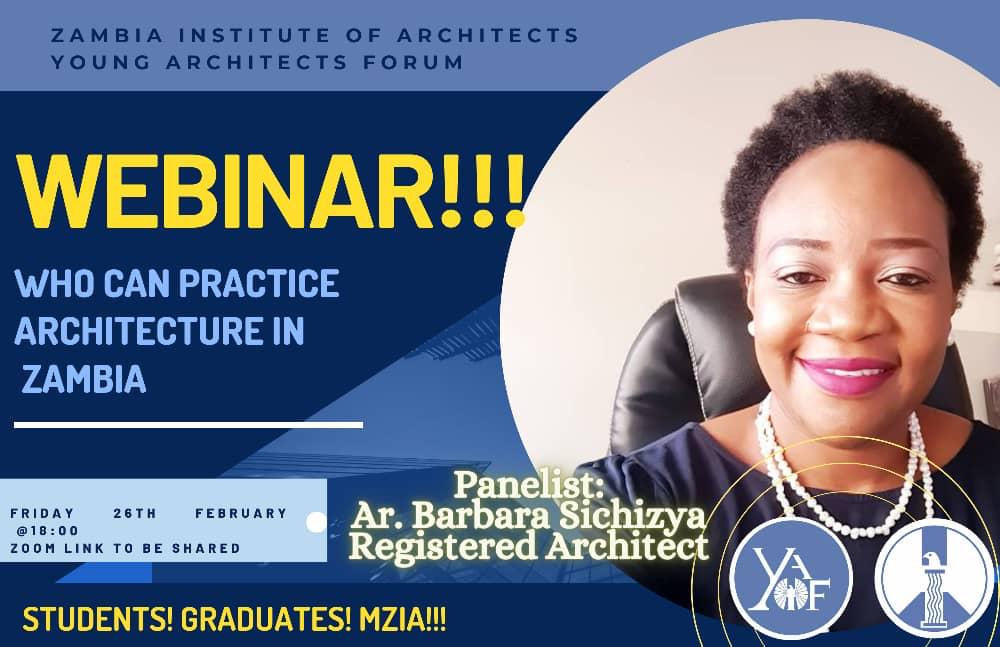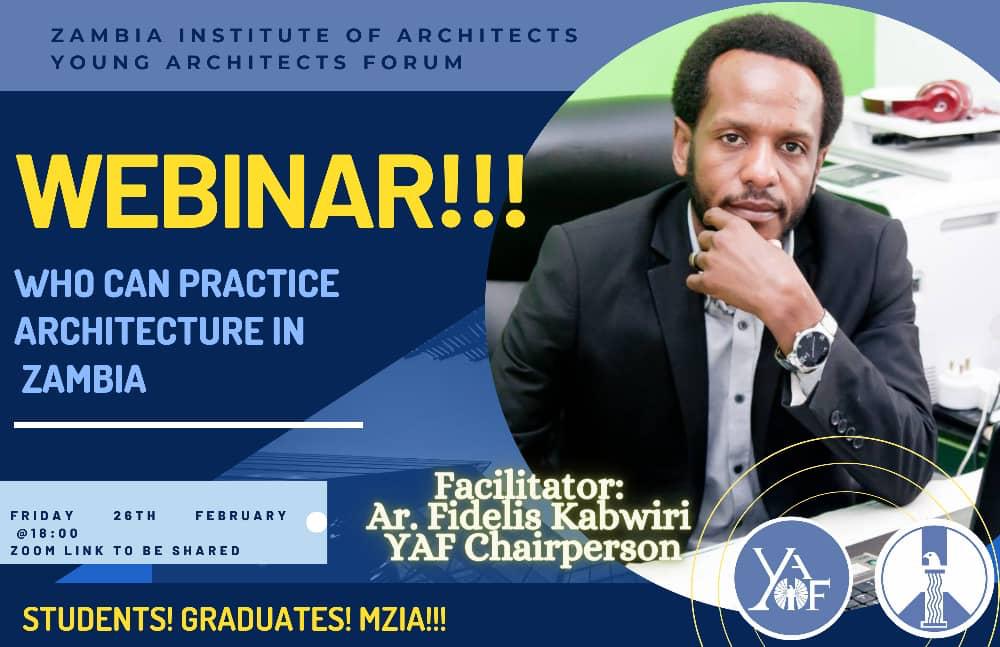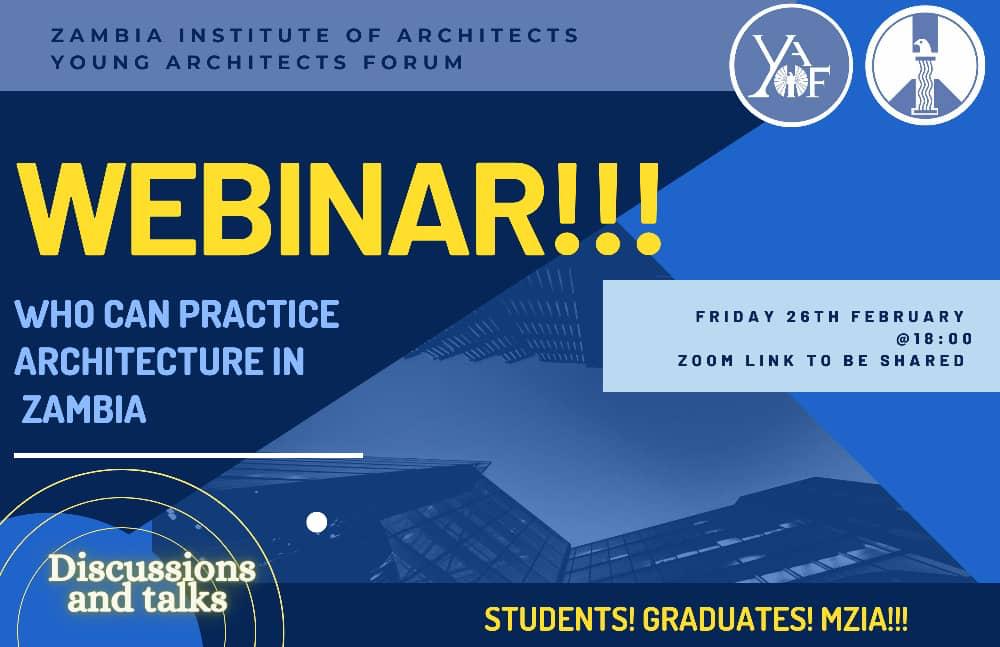Dr Hector Sikazwe, Newcastle Upon Tyne, 2021
Today, we continue our series on the Zambian Architect and what it takes for them to set up a practice. The series is based on the experiences of Dr. Ar. Hector Sikazwe in his years as a professional which span over 25 years in both Private and public sector in Zambia, the United Kingdom and many other countries. He currently runs his own Architectural consulting firm Apex Business management Consultants Ltd, in Newcastle upon Tyne, UK, where the firm conducts research in novel technologies in the construction industry.
Today we look at a few attributes that must be present in an Architect otherwise they remain basic draughtsman, 3D enthusiasts or simply cowboys:
Architects are synonymous with “Systems”
Architects are rare human beings who survive on “systems”. Architects think in terms of systems, not just things. “A system is a set of detailed methods, procedures and routines created to carry out a specific activity, perform a duty, or solve a problem.” A system can also be described as an organized, purposeful structure that consists of interrelated and interdependent elements (components, entities, factors, members, parts etc.). These elements continually influence one another (directly or indirectly) to maintain their activity and the existence of the system, to achieve the goal of the system. It is important to understand that all systems have:
✓ Inputs, outputs and feedback mechanisms,
✓ Maintain an internal steady-state (called homeostasis) despite a changing external environment,
✓ Display properties that are different than the whole (called emergent properties) but are not possessed by any of the individual elements, and
✓ Have boundaries that are usually defined by the system observer
Architects probably have one of three “systems” for organizing their bookshelves: by colour, by size (largest to smallest), by a publisher etc. None of these make any sense and ironically provide the very opposite of “order”, but it doesn’t matter, because it looks better. In fact, Architects will have a “system” for everything, including organizing the fridge, and how to put their clothes away, the sequence of what they do, the order of what they feel comes first, etc. You might think it’s cute and remarkable at first, an endearing quirk until you realize how much of Architect’s precious little free time is consumed by obsessing over things that:
✓ No one cares about and
✓ Does not enhance their lives in any way.
✓ Confusing habits like terrible sleeping habits
✓ Listen to strange music, attend Opera, etc
Architects understand that the world is not made up of individual, disconnected things, And that everything is causal, interrelated and connected. They design the spaces between things as well as the things themselves – and help others to see what they were formerly unable to see and was certain wasn’t there before we gifted them with a new pair of eyes.
Architects are educated
Architects are typically well-educated individuals. Architects spend a minimum of 5 years in University working all the time just for the first degree. Who is most qualified to lead integrated project teams? (Those who deem this to be elitist need not continue reading.) It is paramount to realize that Architects are people trained to think of other’s needs before their own. They are professionals licensed to protect the health, safety and welfare of the project’s inhabitants. They are the Doctor, teacher, carer, Preacher, Worrier, furniture expert, cleaner and arranger of space use. They fret over nothing and are allowed to indulge in lanes that are usually avoided by most. They are simply the custodian of the Orchestra of life interactions.
Invariably, Architects are dedicated to continuous learning. They are highly focused individuals possessing immense dedication in what they embark on. They don’t go through 5 years of architectural school by being lazy, indifferent and stupid. (hint Need a first date conversation starter with an Architect? Ask them about how many people dropped out of their program freshman year – they’ll be all too proud to tell you that “they were one of the few” who made it out unscathed.”) They know just enough about every culturally relevant artist, philosopher, composer etc to make them seem exceptionally worldly and widely-informed but heavily cultured to put icing on the cake.
Keep in mind that Architects can very aptly put on a show were previously not possible as they can always put on a perfect façade and that if you were to press them on any one of those topics, they’ll find a way to skilfully manipulate the conversation into some abstract “concept” and avoid being called out on not knowing much. This skill is known as “conversation design”. In a nutshell, Architects are the masters of knowledge beyond.
When architects discuss what the building will be used for, they talk about the “function” of the building. Incidentally, the “function” of a building is just one of the many things an architect has to think about when designing a building.
Good architects also spend a lot of time making sure a building is safely designed, and making sure the building will last for many years. A building that is not safely designed could catch on fire or fall on itself, resulting in many casualties. Therefore, Architects have to design a building so that people can escape from the building in an emergency. Of course, some emergencies, such as earthquakes or tornadoes, destroy even the safest buildings and other skills set from other building professionals have to be incorporated into the design team when designing.
Architects slow people down
Almost every new generation has to work harder than the previous one, in one way or another. Our grandparents may have to endure hardships in life. We, the younger generation who are born in the age of technology, have our field of things to learn and to grasp, that was absent from our grandparent’s childhood days. They didn’t have to fight off the temptation of gaming. They didn’t have to attend Info comm. Studies The newest technologies, computers, genetic engineering and the emerging field of nanotech-differ from the technologies that fundamentally preceded them.
The telephone, the automobile, television and jet air travel accelerated for a while, transforming society along the way, but then settled into a manageable rate of change. Each was eventually rewarded more for staying the same than for radically transforming itself–a stable, predictable, reliable condition known as “lock-in.”
So, Architects come in and moderate the rate of change by designing places and spaces that help people to slow down, look around and take in the view. Without consciously knowing what effects are impacted on them, and before they realize it, they are no longer in the place, but of it. Architects can design places that touch the soul as people take in the breath-taking views of authentic structures that arouse soul-searching inner conversations. Architects design structures that seem to dictate to civilization to have the “NOT-SO-FAST” button. Proponents of good Architectural technological make a strong design case for letting self- accelerating building technologies to follow their life cycle.
“Rapid development in computer technology,” they point out, “has spun off robotics and the Internet–to the great benefit of industry and human communications and the design of appropriate building structures to house these technologies invariably regulate the speed of change.” Although it isn’t so easy for Architecture and the free society to put the brakes on technology, good design does provide some sequencing and moderation of the speed of transformation of the environment and the sustainability dictates of the environment.
Architects are T-shaped – both deep and wide
More than mere experts at what they do and know, architects, due to their training and education can see through other’s eyes, empathize and understand what is important to others at the table. Architects have deep skills and wide wingspan breadth of the knowledge they possess for them to be entrusted with the designing of the built environment. Architects understand and get urban design. Architects know that the design of cities and buildings affects the quality of lives and communities, whether this is acknowledged or appreciated is another matter.
The bottom line is this: When it comes to creating the urban form, places where people live, work and play, architects’ matter. Architecture requires both empirical knowledge (knowledge obtained from experience) as well as the capability to do abstractions and work out solutions rationally. Architects have to have rational reasoning capacity in the fields of Physics, Chemistry and metaphysical natural cycles. In those fields, the faculty to do abstractions and rational thinking is what is most critically needed.
The width and depth of knowledge needed in architecture are quite vast. Many young architecture students and excitable young architects think that they can get all that quickly. It usually will not happen and one needs to develop both the “right” and “left” brain to be a good architect. Architecture takes time.
Architects think differently, even for others
This might not be politically correct for those that are sensitive: Architects think for other professions. This is no chip on the shoulder, but this is something Architects do for others. So many aspire to do something interesting with their lives, belong to a profession that offers endless opportunities to challenge oneself.
Being an architect is one of the last callings that matters. Architects don’t go into architecture to take or even to make money but to give something back to society. Architects matter because they are there to help their clients succeed. Architects and our professional services firms don’t succeed unless the client does. Architects love to help others achieve their goals and reach their dreams and find imaginative ways to help them get there.
Architects are able to think in both business and design terms, to use their design sense to further the business ambitions of their clients. Call it design thinking. Architects are leaders when it comes to design thinking – the ability to apply design sense to help others with their business needs.
Architects are continuously giving, whether going the extra mile, burning one more end of the candle, or by putting their talent and resources in the service of those who need it most. Such as the 1%, a program of Public Architecture, connects non-profits with architecture and design firms willing to give of their time without pay. Architects serve on many Non-profit making organisation’s and involve themselves in charity work world-wide. As much as Architects are community givers, they are also community builders too.
Architects are technologists, artists and craftsmen
The pride of the Architectural world is the fact that Architects are proven technologists, Artists, and craftsmen. Therefore, Architects, are an indispensable part of the design and construction process. They are at the crux of real estate, development, concrete and plumbing. On projects where there may be well over 100 independent entities – from interior design to energy analysis – all pass through the architect. Architects are the common link between project constituents. Not merely open to change, they assist in moving change along.
Architects may come across as Howard Roark types – lone wolves in sheep’s clothing. Architects are all born collaborators. Architects are trained and educated to work productively in teams, and despite the current interest in autonomy, Architects know that they get the best results when involving all stakeholders and working well with others.
No matter how traditional or conventional the assignment, architects make great strides to incorporate the latest advanced technologies. Good Architects have a good command of prevailing technologies and the use of software tools like AutoCAD, REVIT, ArchiCAD, MicroStation, Vector works etc. Architects recognise that the intelligent use of tools such as computers can marginally reduce the time on a project but the fact remains that for an architect to be worthy of being called as such would need to work BOTH on abstractions (conceptual thinking), and empirical knowledge. A lot of architectural knowledge taught in colleges (I am speaking from another planet’s perspective) are all empirical. To think in abstractions like the way a physicist or a mathematician would, may not be possible for all architects. They need to work on that aspect and most Architects have vast knowledge in the area of responsibility in the built environment.
Architects draw by hand, mouse and by a wand.
Creatively ambidextrous, flexible and agile, we are not stuck on any one means of communication or delivery. Architects make the best use of available technology to get their point across – but we are not above using a stick in the sand, rock on pavement or a burnt piece of charcoal to connect and help clients understand. Architects can work with what is available: Laptops, Mobile handsets, Tablets, drawing boards and even wands! Architects are dexterous and possess various skill sets that make them useful in whichever circumstance they are found in.
Architects use words, images and action to get ideas across and accepted. But in the end, most want to get their designs out in the world, for others to use, live in and among and yes, even critique and judge. Architects are master puzzle makers.
Architects are needed because they can put it all together. Architects fix what is broken and repair what’s been devastated. When given a multi-faceted program containing 1000’s of input and data – it doesn’t even occur to Architects that the result will be anything less and a complete, cohesive and coherent work of whole building design. That’s what Architects do: They work in mazes and still come out.
Architects transform chaos into order
Architects are proud to be described as the arranger of a chaotic environment into orderly finished products. Architects are not only problem solvers, architects recognize that identifying the right problem to solve is often 80% of the solution. Often, the problem they have been assigned is not the one that truly requires addressing.
Architects work efficiently and effectively to make sure that everyone is focused on the most pressing, pertinent problem and provide the best solutions for the community and the built environment. Architects are accused of wanting to sort of making connections to processes – Architects literally see connections everywhere in everything and are, without much effort are also associative thinkers.
The world needs more of Architects – to feel less isolated. Architect’s product – buildings – may be one-offs, but not the way Architects design or plan them. Architects are always linking and making connections between things. Architects can’t help it – it’s the way their minds work. They are a series of moving parts that synchronise in motion to make everything normal and less chaotic.
Architects give the world meaning
It is not rocket science to know that the world needs architects. The earth, our continents and countries need architects to address national issues. Our region needs architects to represent what distinguishes one locale from another, to make sure that Architect’s work belongs to a specific place and time so that the world might place itself in it. Our Towns needs architects, our cities need architects, and especially our suburbs.
Architects may be involved in only a small number of projects, but just think of places where people have been happiest, felt most at home, felt a sense of purpose and accomplishment, at ease with themselves and their surroundings, if careful considerations is made, one finds that more than likely an architect was involved.
The bottom line is this: all architects are alike. They share similar values, obsessions, fixations and interests. Architects can learn a great deal from each other. Architects belong to a tribe. They speak one language: Make the world function better.
So now let us hear the basic conclusions of what an Architect really is. He is not a draughtsman. He is not a graphics designer. He is not a Quantity surveyor. He is not a bricklayer. He is not a plasterer. He is not an engineer. He is not a client. Dear me, I think I have gone off tangent, What I mean, he is all the above and much more! Architects are needed because they can put it all together. Architects fix what is broken and repair what’s been devastated. When given a complex program containing myriads s of input and data – it doesn’t even occur to us that the result will be anything less and a complete, cohesive and coherent work of whole building design. Architects are comfortable with ambiguity. Architects keep everyone’s needs, wants, aspirations and wishes, their ideas and ideals, in mind throughout the design process. With many balloons in the air, one would think it would be hard to make everybody happy. Architects not only improve the built world and environment but also design to improve natural processes.
Architects understand it’s not about the building, it’s about the business and the people and what they do when they are there. Upstream, downstream and throughout the project architects follow the flow of movement and energy to and from their projects. Architects matter because they know what they produce will be around for a while and therefore carry the additional weight of responsibility for their choices and actions on projects.
Architects try to make the most with what they have and are given even if it is not expected or asked for. Had they not done so, the built world would be confined to making shelters. Like Helmut Jahn, we strive for an architecture from which nothing can be taken away. Architects practice an art that is in the world and also of the world. But at the same time stands apart is its own animal. As Thom Mayne has said: Architecture is involved with the world, but at the same time it has a certain autonomy. This autonomy cannot be explained in terms of traditional logic because the most interesting parts of the work are non-verbal. They operate within the terms of the work, like any art, but better.
Next week, In Part 3 we will look at a how an architect sets up his office and brings their practice altogether.















